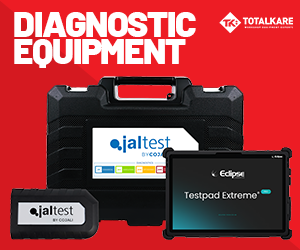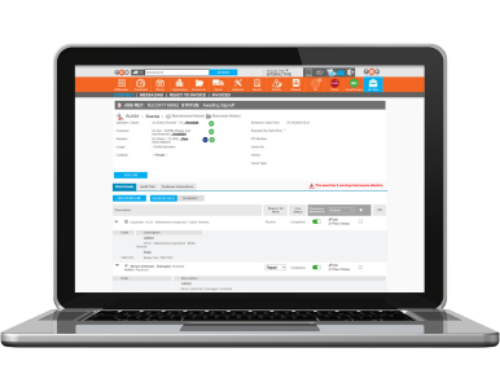BPW highlights brake testing compliance changes
 With the commercial vehicle industry facing significant changes in how trailer brakes are tested, BPW has outlined the advantages of opting for an electronic brake performance monitoring system (EBPMS) such as that offered by its idem Telematics division.
With the commercial vehicle industry facing significant changes in how trailer brakes are tested, BPW has outlined the advantages of opting for an electronic brake performance monitoring system (EBPMS) such as that offered by its idem Telematics division.
“Recent Driver and Vehicle Standards Agency (DVSA) updates have introduced more stringent requirements to enhance road safety and ensure consistent brake performance,” said BPW.
“In the latest version of the DVSA’s Guide to Maintaining Roadworthiness, Section 5.3 underscores the critical importance of brake performance testing during safety inspections.”
From April 2025, excepting exemptions, there will be an expectation by DVSA that a laden roller brake test or EBPMS will be the only accepted methods to assess brake performance.
“As the industry moves toward stricter compliance requirements, fleet operators are now faced with a crucial decision that could significantly impact their operations,” said BPW.
“They must decide whether to continue with the traditional RBT or transition to a more state-of-the-art EBPMS. This choice is not just a matter of compliance; it is a strategic decision that could influence the overall efficiency, safety, and cost-effectiveness of their fleet and operations.”
While on one hand, the RBT has long been the industry standard for brake performance testing – involving the individual testing of each wheel using drive rollers to turn the wheels before the brake is applied – this method comes with its own set of challenges, BPW contends.
“Under the new regulations, and the increased frequency of RBTs, means that not all fleet operators have easy access to roller brake testing centres and necessary loading equipment,” said the firm.
“To meet these demands, some operators have been forced to hire additional staff dedicated solely to loading and unloading trailers, adding considerable expense. These logistical challenges make RBT a time-intensive and potentially costly option for fleet operators.”
BPW says EBPMS offers a cutting-edge solution with proven benefits.
“EBPMS monitors in-service braking performance and provides comprehensive reports. Providing there is sufficient data, these reports can be used during a safety inspection in place of an RBT.
“Sharing EBPMS data demonstrates compliance with the current DVSA requirements (set out in the DVSA Guide to Maintaining Roadworthiness) and can reduce brake roller tests from four to one per year.
 “BPW idem Telematics offers an EBPMS solution that continuously monitors the brakes using data collected from the Electronic Braking System (EBS), combined with its telematics system to generate real-time data reports.
“BPW idem Telematics offers an EBPMS solution that continuously monitors the brakes using data collected from the Electronic Braking System (EBS), combined with its telematics system to generate real-time data reports.
“These reports can be generated on a daily, weekly, monthly, or annual basis, with accuracy improving the longer the system is in use. Reports are easily accessible via a smartphone app or a telematics portal, allowing operators to identify potential braking issues well before scheduled maintenance.
“It’s important to remember that EBPMS cannot entirely replace an RBT,” added BPW.
“They are two different methods of determining brake performance; an RBT must still be performed during an annual MOT test.”
The company continued: “BPW is at the forefront of these industry changes, with over 125 years of braking experience and more than four million braking systems on the road worldwide, they offer solutions that not only help fleet operators comply with the new regulations but also optimise their operations.
“BPW idem Telematics provides a comprehensive EBPMS solution designed to meet the evolving needs of the commercial vehicle industry. Fleet managers can rely on BPW for expert guidance, state-of-the-art technology, and continuous support to navigate these regulatory changes with confidence.”












